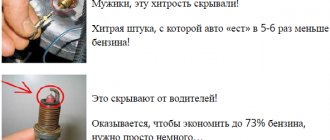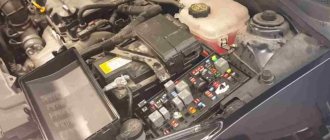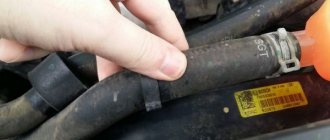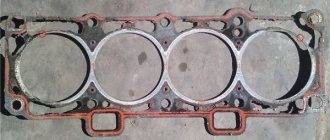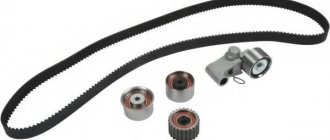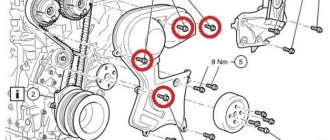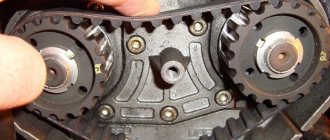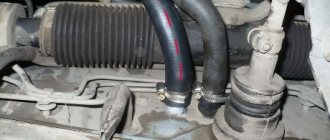Facts from history and modern times
It is believed that the first seat belt was invented and patented in 1885 by American Edward Claghorn. Initially, the device was used for passengers traveling in open carriages. Later, coachmen also began to use the belt. However, seat belts began to appear in the automotive industry much later. At the beginning of the twentieth century they tried to introduce them as an additional option, but the idea never took root.
Today, seat belts are an integral part of any car.
Ford was the first company to equip its cars with seat belts en masse: in 1948, new devices were installed in several models of this brand.
In their modern form, seat belts appeared in cars only in 1959, when the Swedish concern Volvo began installing them.
In modern vehicles, seat belts are an integral part. While driving, not only the driver, but also each of the passengers in the car needs to wear them. If this rule is violated, the driver will face a fine of 1,000 rubles (based on clause 12.6 of the Code of Administrative Offenses of the Russian Federation).
However, it is not monetary penalties, but concern for their own safety that obliges drivers and passengers to use a passive safety device that has been proven over the years. In the event of a frontal collision, seat belts prevent:
- departure through the windshield;
- impact with the steering wheel, dashboard or seats in front.
If there is a strong side impact, the car may roll over. There are known cases where unbelted people flew out of the side windows and were then crushed by the body of the car. If seat belts are used as intended, this situation will not occur.
Any unsecured object inside the car poses a danger to other passengers in a collision. People and pets are no exception.
A little history...
They first appeared in 1885. Initially, they were actively used at the dawn of the aviation era. It is known that the French pilot Pegu was the first to perform a “dead loop” in 1913, securely fastened with a special safety mechanism. It was a belt with carabiners, which resembled those used by high-altitude installers.
In the early fifties of the last century, these safety devices came down from heaven to earth and migrated to cars. The patent for the invention went to the Ligon brothers from the USA. Their device had two attachment points and provided fixation in the belt area.
A little later, this innovation interested Henry Ford and legendary Ford cars began to “run” around the world with an innovative option that distinguished them from others. At that time, two types of two-point belts were used: lap and chest. The waist belt intercepted the lumbar area and ran parallel to the seat, and the chest belt was attached on one side below, and the other on a special tunnel installed between the seats.
Already in 1955 in the USA, the use of this type of insurance became mandatory, turning it from an option into standard equipment. Two years later, the Swedish Riksdag made the same decision, and later other European countries. Innovation reached us only in 1975.
Although this is not the main topic of the article, it is necessary to mention these rules. After all, protecting a person from injury is the main purpose of any seat belt, no matter what type it belongs to. And if it is not fastened properly, this protection becomes less reliable.
The most common fastening errors include the following:
- Incorrect belt height
The height of the belt should correspond to the height of the person sitting. To successfully adjust the belt to your needs, you should focus on comfort. Also, the strap should not touch the neck and should not be very low on the shoulder.
- Incorrect belt length
Read more: The principle of operation of the differential and its design
This refers to the non-inertial type. How to choose the length was discussed above.
- Twisted straps
The seat belt must be straight.
- Incorrect placement of the lap strap
The waist strap must not go over the stomach. According to the rules, it should be located slightly lower.
- Incorrect belt fastening
Sometimes you can attach it to the wrong lock by mistake. Also, in some cases, the strap may get caught on the seat. All this needs to be checked.
Following these recommendations and correctly adjusting your seat belt will help keep you safe in the event of an accident.
Thus, there are several types of seat belts. Each has its own characteristics. And knowing this is a good support in the art of driving.
The massive distribution of seat belts occurred in the 50s of the last century. This was due to the fact that at ever increasing speeds, accidents began to lead to quite serious injuries and often deaths.
Gustav Lebe, a French scientist, proposed installing five-point seat belts on cars back in 1903. But at that time his idea did not meet with much enthusiasm, and as a result, did not take root. During the research for the best design, more than a dozen devices were invented, but none of them, for a number of reasons, took root. Some are due to the complexity of the design and fastenings, others due to insufficient reliability.
Take, for example, the same two-point seat belts. Fixing the passenger or driver at waist level, in the event of a collision, they did not save them from hitting the dashboard, steering wheel or windshield. After all, the upper body was not fixed at all. Some GAZelle car models still have a similar mount (front seat next to the driver).
The pioneer, whose invention not only caught on, but also became widespread, and later became the progenitor of all modern three-point seat belts, was Nils Bohlin. An engineer from Sweden, who worked on ejection safety systems for an airline, came to Volvo and proposed a three-point system.
Design and principle of operation
At first glance, the design of a seat belt may seem extremely simple. Nevertheless, the design of modern belts includes a fairly large list of elements, which include:
- tension tape (made from high-strength polyester fibers that can withstand heavy loads);
- fasteners (most often installed on body elements for more reliable fixation, with the exception of cars with four- and five-point belts that are attached to the seat);
- belt lock (provides a detachable fastening point, thanks to which convenient installation of the straps is possible);
- inertial reels (responsible for the correct tension of the belt tape and its rewinding when unfastened);
- limiters (allow you to smoothly increase the length of the belt to absorb energy and increase safety at the time of an accident);
- pretensioners (triggered at the moment of impact, instantly tightening the tape and preventing body acceleration).
The complete list of elements depends on the belt operating mechanism. In total, there are three principles of operation of devices:
- Static mechanism. This type of design is outdated and is not used on modern cars. The tape has a certain length that can be adjusted manually. Due to non-compliance of the design with safety standards, belts of this type are out of service.
- Dynamic mechanism. Such belts can evenly lengthen and retract as a person moves. However, during sudden braking, the latch is activated, thanks to which the belt presses the body tightly against the car seat, keeping the driver or passenger in a stationary position.
- Leading mechanism. The most reliable and modern option associated with other vehicle security systems. If special sensors in the car detect the possibility of a dangerous situation, the electronics tighten the belts in advance. When the danger has passed, the tape returns to its normal position.
Pre-tensioner element
Pretensioners began to be installed in seat belt designs several years ago, but their role should not be underestimated. As noted earlier, the reel cannot technically stop the unwinding of the belt instantly, which is why the body still manages to continue its inertial movement. It is to prevent this drawback that pretensioners were developed, tensioning the belt until the moment of a sharp stop and inertial movement of the body.
There are 2 main types of pretensioners.
- Squib cartridges.
- Electrically driven.
Types of modern seat belts
As seat belts began to be introduced into the automotive industry, manufacturers began to offer different types of these devices. As a result, in modern cars you can find several categories of belts:
- Two-point belts are an obsolete option. Such devices are most common in passenger buses and airplanes. Sometimes two-point belts are installed in the rear seats of cars for the passenger sitting in the middle.
- A three-point belt is an option familiar to most car owners. It is also called diagonal-waist. It has a secure fit and is universal (suitable for both the front and rear rows of seats in any car).
- Four-point harnesses are not a widely used type. Most often they are used on sports cars, special equipment, and sometimes on SUVs. The belt is attached to the seat at four points, keeping the person from tipping over or getting hit hard.
- Five-point belts are used only in expensive supercars, as well as in the design of child restraints. In addition to the shoulder and waist fastenings, another belt is installed, located between the passenger’s legs.
Four-point belts can be found in racing cars and sports cars.
belt
The inertial reel made the belt tension force optimal.
The inertial reel made the belt tension force optimal.
At first, the compromise was questionable, because the inertial belt turned out to be less effective than the static one. The overall length of the inertia belt straps was longer. But since so many people either loosened the tension of the static belt or did not wear it at all, the effect of introducing the inertial belt eventually became noticeable. The restraint system was then equipped with pretensioners and limiters, which allowed the three-point belt to gain the efficiency and reliability that it still has today. With the development of electronics, electric pretensioners were introduced that coordinate their operation with the SRS sensor. Such pretensioners are triggered not only after an impact, but also warn the driver about the operation, pressing him to the seat. The purpose of a belt force limiter is to reduce the impact on a person's chest during a collision. By loosening the belt tension, it dampens overloads and ensures a gentle effect of passive safety systems on the human body.
Operating rules
Using a seat belt is as simple and convenient as possible for the driver and passengers. However, even this simple device has its own rules and operating nuances.
- To check if the seat belt is tight enough, place your hand between the belt strap and your body. If there is a noticeable compression on the hand, it means it is tensioned to the required extent.
- Do not allow the tape to twist. In addition to the obvious inconvenience, such operation of the belt will not provide it with proper tension in an emergency.
- If the car was sent for repairs after a serious accident, ask the service specialists to pay attention to the seat belts. As a result of strong and sudden tension, the tapes could lose their strength. It is possible that they need to be replaced, and also check the reliability of fastening of all elements of the device.
- It is recommended to replace seat belts even during accident-free driving at intervals of 5-10 years due to natural wear and tear.
Many motorists try to loosen the belt so that it does not hinder movement. However, an unreasonably weak tension significantly reduces the braking effect of the device, which is why its effectiveness is significantly reduced.
In the event of an accident, an unbelted driver and his passengers can suffer more serious injuries, which are often incompatible with life.
Statistics say that if a person ignores the need to wear a seat belt in a car, then in the event of an accident the risk of serious injury will increase:
- 2.5 times - in a frontal collision;
- 1.8 times – in case of a side impact;
- 5 times - when the car rolls over.
The road can be completely unpredictable, so seat belts can save your life at any time.
belt
Seat belts have become mandatory for rear passengers
Seat belts have become mandatory for rear passengers
Million Dollar Belt
Bolin's belts were not always effective. In order for them to function correctly, they needed to be adjusted so that two fingers fit between the chest and the strap. But drivers complained that the belts were too tight in this case. And weakening led to serious injuries in accidents. Therefore, in 1972, Bolin had to change the static belts to inertial ones. When fastened, such a belt was tensioned, and in the event of a collision, the latch was activated, stopping the reel. “My main merit,” Nils Bohlin later admitted, “is that I was able to find the best compromise between the efficiency of the system and its comfort for the driver and passenger.”
belt
Now there are special seat belts for children
Now there are special seat belts for children
But all these are just consistent improvements to the design, the principle of operation of which has not changed for half a century. According to Volvo itself, thanks to Nils Bohlin's invention, the lives of about a million people were saved. Therefore, in 1999, the Swedish engineer was awarded an entry in the book of the most outstanding figures of the world auto industry in the American Automotive Hall of Fame, and in 2002, the year of Bolin’s death, his name was inscribed in the National Inventors Gallery of Fame.
Seat belts: From heaven to earth
